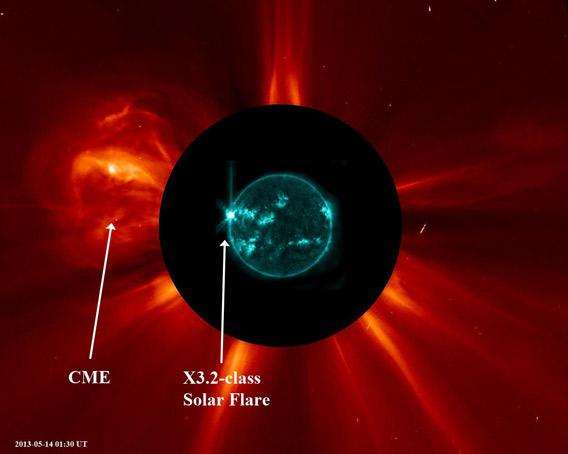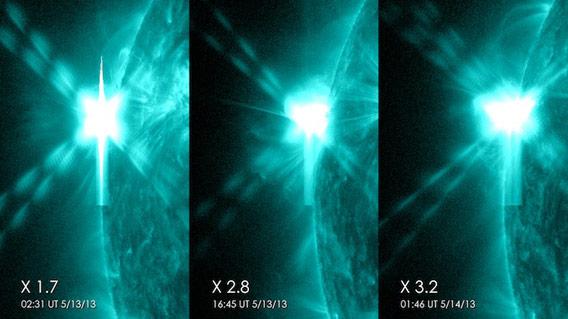[UPDATE (May 15, 02:15 UTC): Make that four: That spot just blew out a fourth flare, this one topping out at X1.2.]
The Sun has been a bit quiet lately, with only minor hiccups of activity here and there. But that changed on May 13, when a sunspot just over the Sun’s limb erupted in the most powerful flare so far this year.
But it didn’t stop there: A few hours later it flipped out again, blasting out an even more power flare… and then again a third flare erupted, more powerful than the last two!
NASA’s Solar Dynamics Observatory caught the whole thing, so I put together a short video showing the first two parts of this dramatic three-act play.
The scale of this is hard to grasp. Flares are caused when the magnetic field lines of the Sun get tangled up, and then snap, releasing their energy. The amount of energy is beyond staggering: It’s equivalent to millions of nuclear weapons all going off simultaneously! Astronomers classify flares according to the energy released; B and C are the lowest, then M, and then X-class flares at the top of the scale. Each class is a factor of ten more powerful than the one below.

Photo by NASA/SDO and NASA/ESA/SOHO
These three were all X-class, and in order they were X1.7, X2.8 and X3.2. That means the last of the three was nearly twice as powerful as the first. All three triggered coronal mass ejections, huge expulsions of billions of tons of material out into space. The last one was so big it will probably catch up with and ram into the earlier two.
I’ll note none of this presents a danger to us on Earth (though we have space probes that may catch the edge of these blasts, and the operators have been notified). But it’s a good reminder that the Sun is still on the low side of its 11 year peak. It’s been relaxed lately, but that doesn’t mean it won’t freak out again over the next few months.
And that’s exactly why we study it. Big eruptions can damage satellites, interrupt communications, and even cause blackouts on Earth. Our eyes in the sky give us a better view, and more importantly, advance warning. Hopefully, if the Sun does decide to aim something our way, well have enough time to deal with it. Satellites can be shut down, power can be shunted through different parts of the grid, and damage minimized. The Earth’s atmopshere protects us fragile humans on the surface, too. But our electronics are expensive, our economy depnds on them, and we have to be aware of the Sun’s potential influence on them.
Astronomy and space exploration can pay off, folks. Quite literally, in this case.
